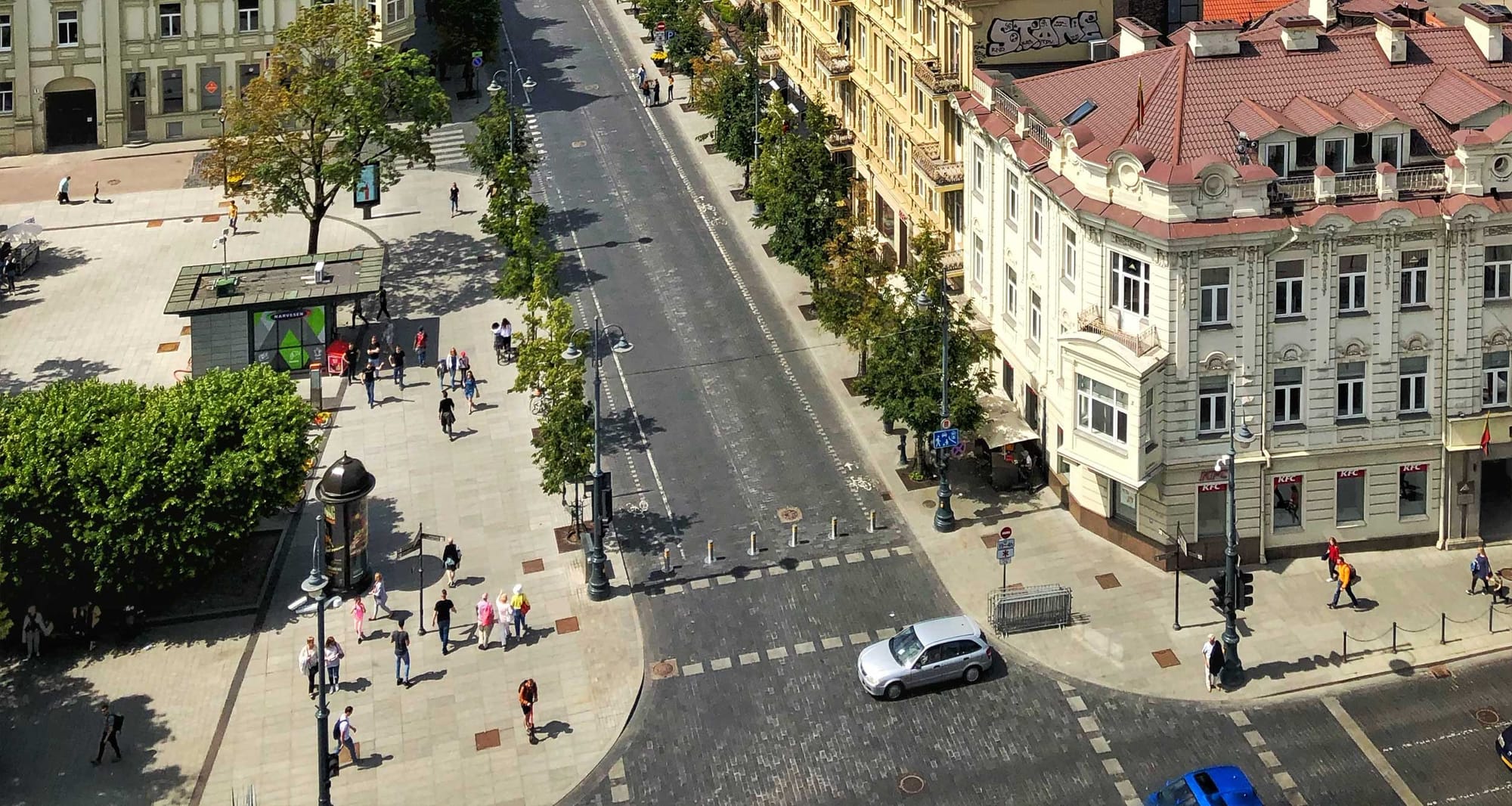
Vilnius, Lithuania is a historic European city with a history that spans nearly a thousand years. Great attention has been paid to maintaining the city’s unique charm and, although many shops and restaurants have inaccessible entrances, sidewalks are largely accessible. Using this guide to Vilnius sidewalk accessibility, you’ll gain perspective on the “roll-ability” of the Latvian capital that will be helpful in planning for your individual mobility needs.
Cobblestone pavements
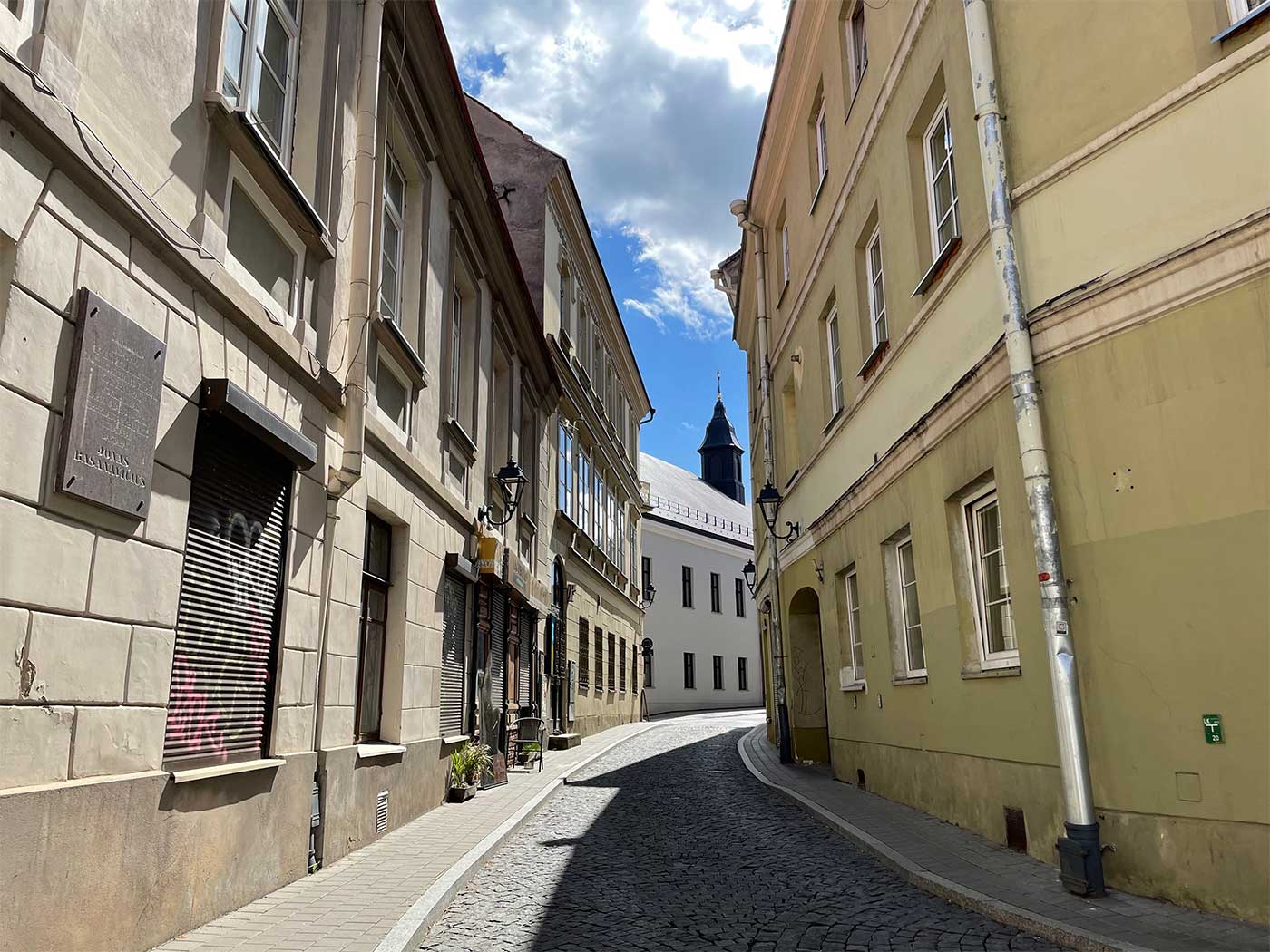

Cobblestones are in widespread use on the streets and sidewalks across the UNESCO-listed Vilnius Old Town, yet many sidewalks use pavers that smooth out the bumpy ride one would typically expect in cities as old as this one. Wheelchair users are in for a bumpy ride, as cobbled streets and sidewalks are around (almost) every corner. Cobblestones that prove most difficult to pass appear in crosswalks and street intersections, where rough stone pavers have been in place for centuries. Cobblestones frequently intersect otherwise accessible sidewalks at intersections, crosswalks, driveways and alleyway entrances.
A handful of narrow streets in the Old Town have sidewalks too narrow to accommodate wheelchairs and other mobility devices — to avoid the cobblestone streets, I found an alternate route whenever possible.
Curb ramps, crosswalks and bike lanes
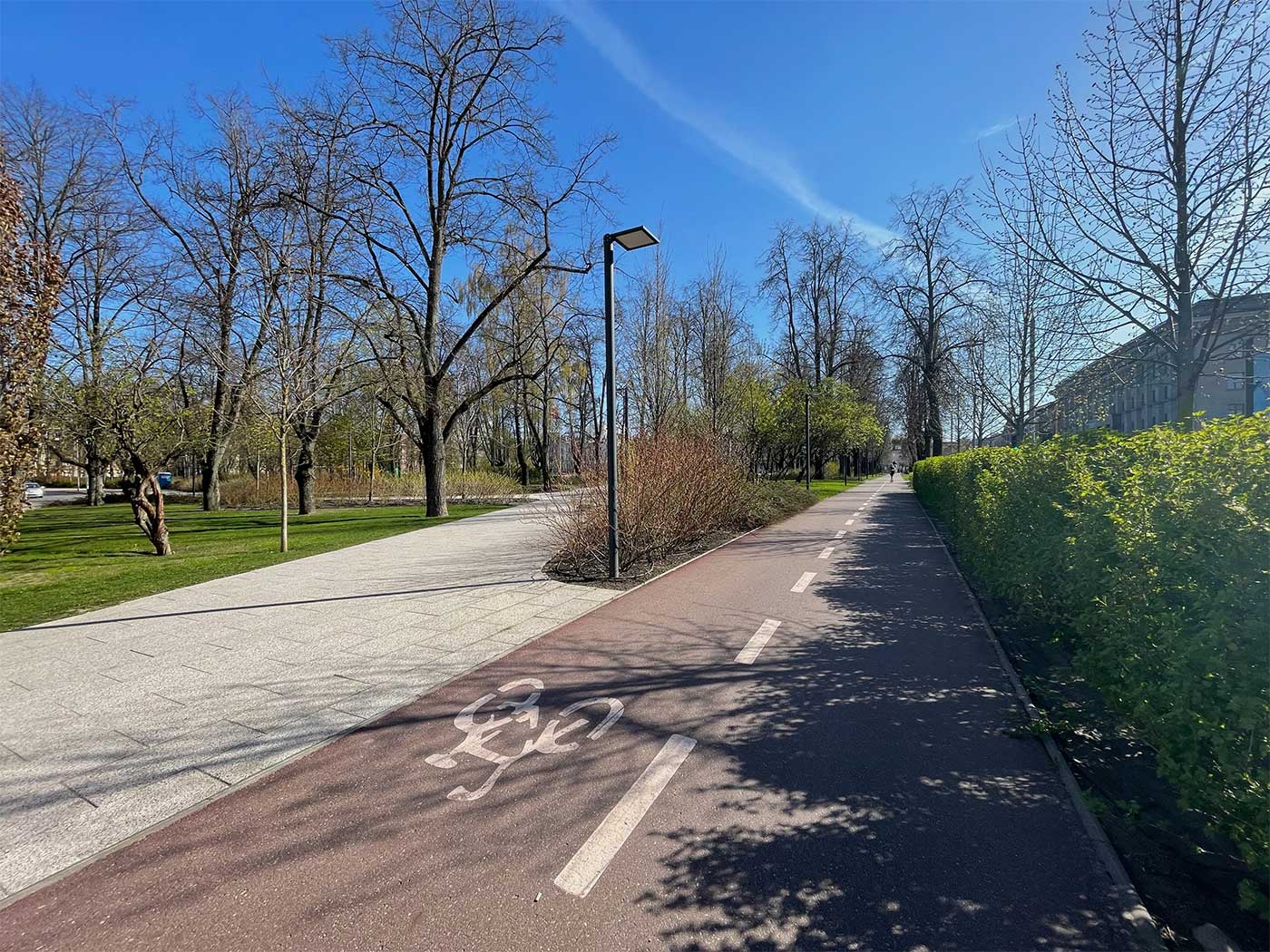
Public parks and green spaces are spread across the city, and some streets and parks feature bicycle lanes that offer superior accessibility to wheelchair users — there is nothing better than a smooth asphalt/tarmac path for wheeling!
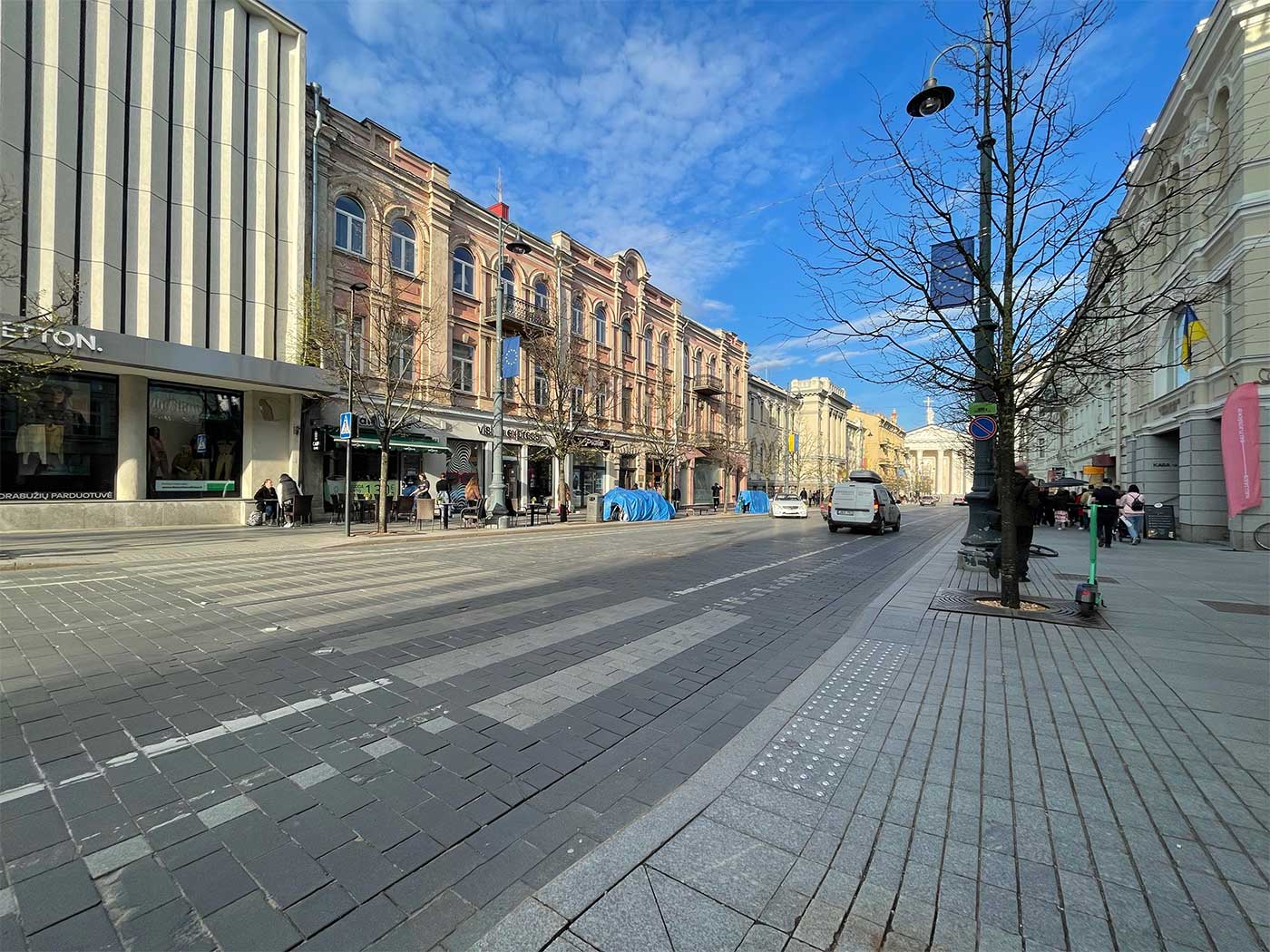
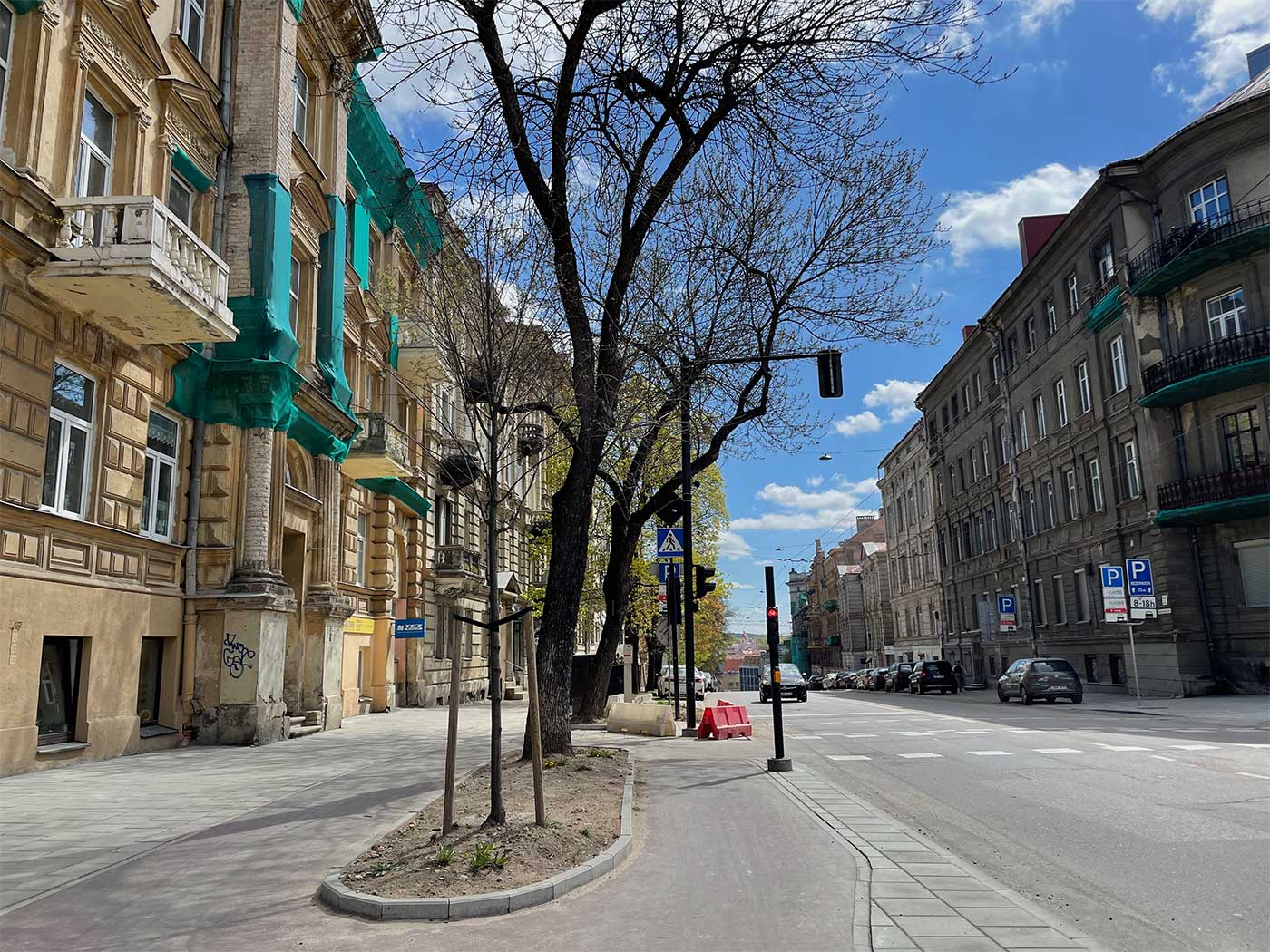
Curb ramps routinely offer an accessible transition from street to sidewalk, with a surface difference of 1.5 inches or less (1.25 cm to 4 cm), with many being perfectly level outside of the Old Town. Although curb ramps are widespread in the touristic areas of the city, every so often a “dead end” will appear — a sidewalk without a curb cut, which makes reversing course to find an alternate route necessary. On a handful of occasions in the city’s Old Town, I found it more expedient to drive my wheelchair in the street for a short distance.
While not universal, the vast majority of crosswalks at stoplight-controlled intersections are outfitted with pedestrian signals. Many sidewalks feature tactile surfaces for the blind.
Final Thoughts
Over the course of my short trip to Vilnius, I put more than 20 miles of distance on my power wheelchair. maneuvered through almost every corner of the city’s Old Town, and explored the modernized and much more wheelchair-friendly areas that surround it.
While a power wheelchair always makes getting around easier (it requires little in the way of physical effort to operate!), I paid close attention to each sidewalk and crossing I used and believe Vilnius is a city where both powered and manual wheelchair users can get around safely. Vilnius is a walkable, rollable and wheelable city and, although much work must still be done to make business entrances barrier-free, this city is high on my list of favorite European destinations and I am eager to return!



